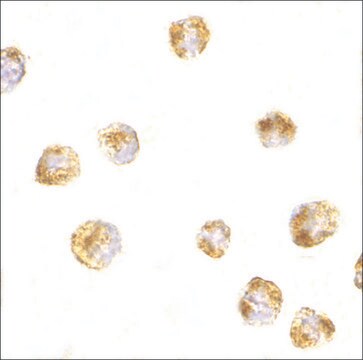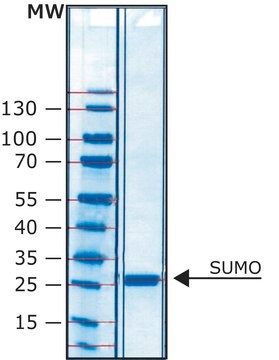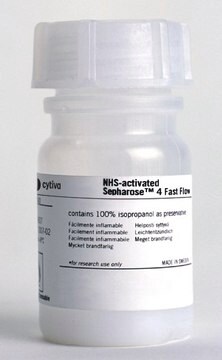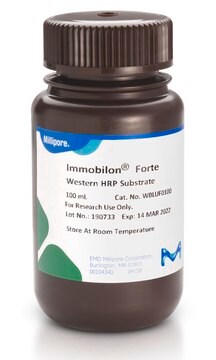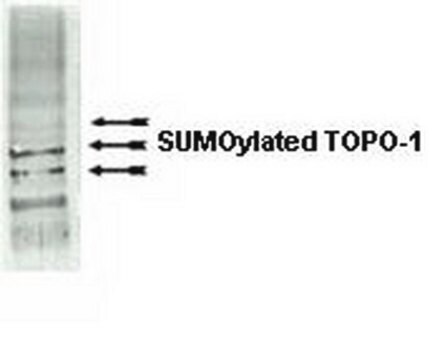MABS2039
Anti-SUMO-2/3 Antibody, clone 8A2
clone 8A2, from mouse
Sinônimo(s):
Small ubiquitin-related modifier 2, HSMT3, SMT3 homolog 2, SUMO-3, Zentrin-2, Ubiquitin-like protein SMT3B, Smt3B
About This Item
Produtos recomendados
fonte biológica
mouse
Nível de qualidade
forma do anticorpo
purified immunoglobulin
tipo de produto de anticorpo
primary antibodies
clone
8A2, monoclonal
reatividade de espécies
human
embalagem
antibody small pack of 25 μg
técnica(s)
immunocytochemistry: suitable
immunoprecipitation (IP): suitable
western blot: suitable
Isotipo
IgG2bκ
nº de adesão NCBI
Condições de expedição
ambient
modificação pós-traducional do alvo
unmodified
Informações sobre genes
human ... SUMO2(6613)
Descrição geral
Especificidade
Imunogênio
Aplicação
Signaling
Immunoprecipitation Analysis: A representative lot detected SUMO-2/3 in Immunoprecipitation applications (Zhu, S., et. al. (2009). Mol Cell. 33(5):570-80).
Western Blotting Analysis: A 1:500 dilution from a representative lot detected SUMO-2/3 in HeLa cell lysate (Courtesy of Christine Lee, Matunis Lab, John Hopkins University, Baltimore, Maryland USA).
Immunocytochemistry Analysis: A 1:500 dilution from a representative lot detected SUMO-2/3 in HeLa cells (Courtesy of Christine Lee, Matunis Lab, John Hopkins University, Baltimore, Maryland USA).
Immunocytochemistry Analysis: A representative lot detected SUMO-2/3 in Immunocytochemistry applications (Zhang, X.D., et. al. (2008). Mol Cell. 29(6):729-41; Rao, H.B., et. al. (2017) Science. 355(6323):403-407).
Immunocytochemistry Analysis: A 1:500 dilution from a representative lot detected SUMO-2/3 in HeLa cells.
Qualidade
Western Blotting Analysis: 4 µg/mL of this antibody detected SUMO-2/3 in HeLa cell lysate.
Descrição-alvo
forma física
Armazenamento e estabilidade
Outras notas
Exoneração de responsabilidade
Não está encontrando o produto certo?
Experimente o nosso Ferramenta de seleção de produtos.
Código de classe de armazenamento
12 - Non Combustible Liquids
Classe de risco de água (WGK)
WGK 1
Ponto de fulgor (°F)
does not flash
Ponto de fulgor (°C)
does not flash
Certificados de análise (COA)
Busque Certificados de análise (COA) digitando o Número do Lote do produto. Os números de lote e remessa podem ser encontrados no rótulo de um produto após a palavra “Lot” ou “Batch”.
Já possui este produto?
Encontre a documentação dos produtos que você adquiriu recentemente na biblioteca de documentos.
Nossa equipe de cientistas tem experiência em todas as áreas de pesquisa, incluindo Life Sciences, ciência de materiais, síntese química, cromatografia, química analítica e muitas outras.
Entre em contato com a assistência técnica